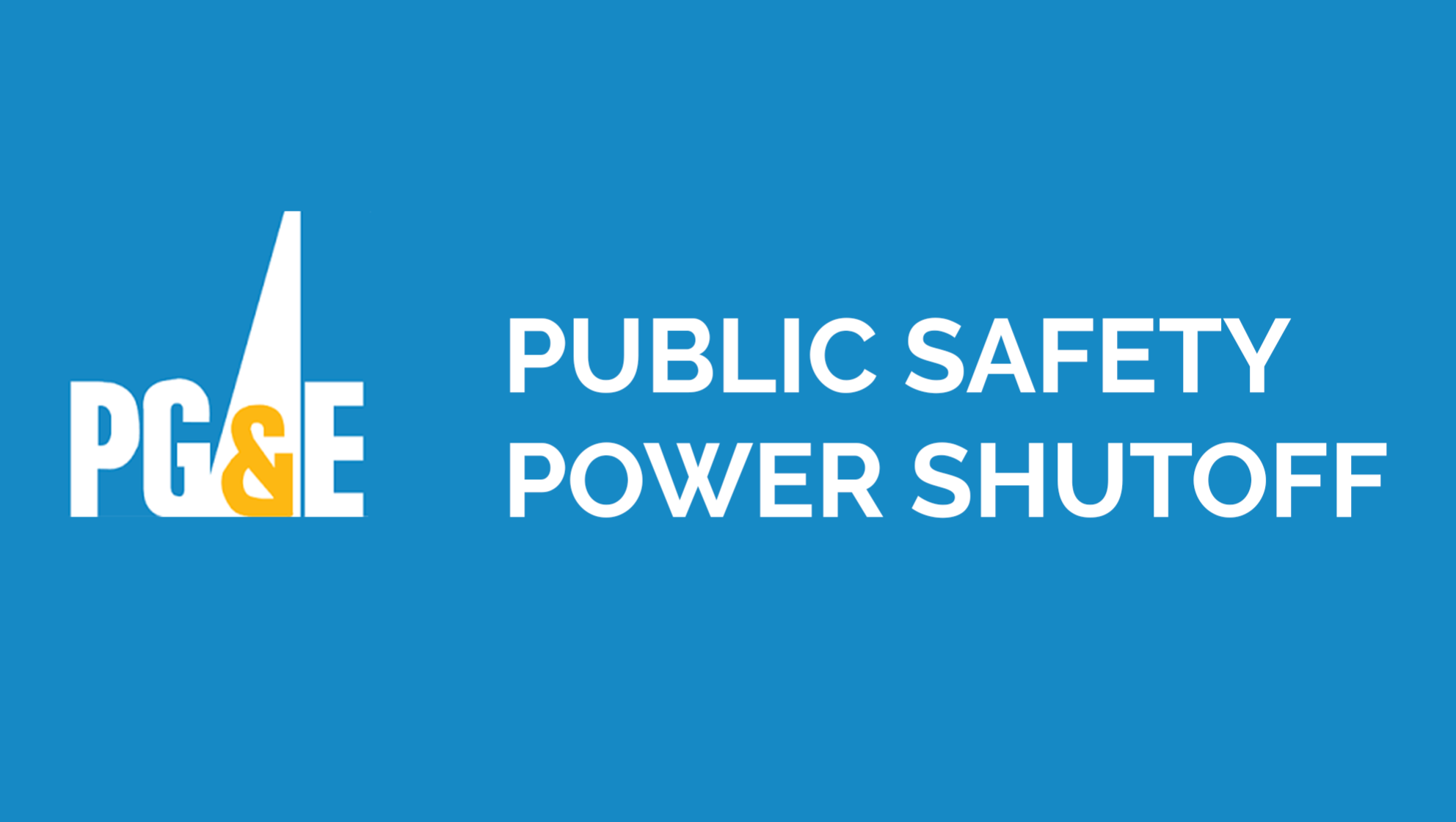
High Winds, Dry Conditions Mean PG&E May Need to Proactively Turn Off Power for Safety Wednesday Morning in Portions of Eight Counties
PG&E Has Sent Day-Ahead Notifications to About 8,500 Customers Who Might Experience a Public Safety Power Shutoff
Note to editors: you can view the map showing potential PSPS affected areas at www.pge.com/outages and select the “future PSPS” button. Also, 431 customers in the Jarbo Gap area of Butte County have been added since yesterday.
OAKLAND, Calif. — Pacific Gas and Electric Company (PG&E) is monitoring a potential dry offshore wind event forecasted to start early Wednesday morning, August 30. Given this wind event and current dry conditions, including extremely dried vegetation, PG&E sent one-day advance notifications Tuesday morning to customers in targeted areas where PG&E may need to proactively turn power off for safety to reduce the risk of wildfire from energized powerlines.
The potential Public Safety Power Shutoff (PSPS) event, starting Wednesday morning and forecasted to last through Thursday morning, could affect approximately 8,500 customers in small portions of eight counties. A widespread PSPS event is not expected at this time.
According to PG&E meteorologists, the primary period of concern develops Wednesday morning, where wind gusts from 30 to 45 mph may develop in elevated terrain around Lake Shasta and spread southward down the western Sacramento Valley and adjacent terrain. Relative humidity values may fall to around 10% in the Sacramento Valley. The National Weather Service in Sacramento has issued a Red Flag Warning for gusty winds and low humidity, which is in effect from 11 p.m. Tuesday evening to 8 p.m. PDT Wednesday.
At the time of this news release’s distribution, the planned outage is approximately 12 hours away and conditions may change.
Customer notifications—via text, email and automated phone call—began Monday approximately two days prior to the potential shutoff. PG&E employees will conduct individual in-person visits, when possible, to customers enrolled in the company’s Medical Baseline Program who do not verify they have received these important safety communications, with a primary focus on customers who rely on electricity for critical life-sustaining equipment.
Potentially Affected Counties
Customers can look up their address online to find out if their location is being monitored for the potential safety shutoff at pge.com/pspsupdates.
The potential shutoff is currently expected to affect approximately 8,500 customers across the following counties:
- Butte County: 431customers, 37 Medical Baseline customers
- Colusa County: 531customers, 38 Medical Baseline customers
- Glenn County: 365customers, 19 Medical Baseline customers
- Lake County: 50customers, 0 Medical Baseline customers
- Napa County: 8customers, 19 Medical Baseline customers
- Shasta County: 3,812customers, 356 Medical Baseline customers
- Tehama County: 3,249customers, 352 Medical Baseline customers
- Yolo County: 30 customers, 1 Medical Baseline customer
Tribal Communities
- Glen Grindstone Rancheria: 49 customers, 4 Medical Baseline customers
- Shasta Pit River: 8customers, 0 Medical Baseline customers
Community Resource Centers
Eight Community Resource Centers will be available within the affected locations within Butte, Colusa, Tehama and Shasta counties. PG&E will provide resources in these safe locations during this PSPS. Each center offers ADA-accessible restrooms, device charging, Wi-Fi, blankets, air conditioning and bottled water, snacks and other supplies. Customers can look up their address online to find out if their location is being monitored for the potential safety shutoff at pge.com/pspsupdates.
California Network of 211
Customers can call 211 to get help preparing for a potential power outage, or any other kind of emergency, to minimize hardships that may be caused by wildfire safety outages, like a PSPS.
Support is available before, during, and after a power outage. PG&E’s 211 partnership also provides proactive, emergency preparedness outreach for those who rely on power for medical needs, have a disability, are in the aging population or have other needs.
Call 211, text ‘PSPS’ to 211 or visit 211.org to find their local 211.
Why PG&E Calls a PSPS Event
We initiate PSPS when the weather forecast is for such severe weather that people’s safety, lives, homes and businesses may be in danger of wildfires.
As each weather situation is unique, we carefully review a combination of factors when deciding if power must be turned off. These factors include:
- Low humidity levels, generally 30% and below
- A forecast of high winds, particularly sustained winds above 19 miles per hour and wind gusts above 30-40 miles per hour.
- Condition of dry material on the ground and low moisture content of vegetation.
- A Red Flag Warning declared by the National Weather Service
- Real-time ground observations from our Hazard Awareness and Warning Center and from our crews working across the service territory.
Our decision-making process also accounts for the presence of trees tall enough to strike powerlines.
This set of criteria is a first step which may lead to further analysis by our meteorology team to determine if a PSPS event is necessary.
Here’s Where to Learn More
- · PG&E’s emergency website (www.pge.com/pspsupdates) is now available in 16 languages: English, Spanish, Chinese, Tagalog, Russian, Vietnamese, Korean, Farsi, Arabic, Hmong, Khmer, Punjabi, Japanese, Thai, Portuguese and Hindi. Customers can choose their language of preference for viewing the information when visiting the website.
- Customers are encouraged to update their contact information and indicate their preferred language for notifications by visiting www.pge.com/mywildfirealerts or by calling 1-800-743-5000, where in-language support is available.
- Tenants and non-account holders can sign up to receive PSPS ZIP Code Alerts for any area they you do not have a PG&E account by visiting www.pge.com/pspszipcodealerts.
- At PG&E’s Safety Action Center (www.safetyactioncenter.pge.com) customers can prepare for emergencies. By using the “Make Your Own Emergency Plan” tool and answering a few short questions, visitors to the website can compile and organize the important information needed for a personalized family emergency plan. This includes phone numbers, escape routes and a family meeting location if an evacuation is necessary.
PG&E’s Commitment to Wildfire Safety
Using advanced technologies and rebuilding the electric system from the underground up, we are preventing wildfires, improving reliability and reducing costs over the long term. We are building the energy grid of the future that our customers deserve while also taking immediate steps to keep customers safe.
Our wildfire prevention work relies on layers of protection to make our system safer and more resilient while positioning us to better serve our customers in the short and long term. These tools help us respond to our state’s evolving climate challenges:
- Our 10,000-mile Undergrounding Program is the largest effort in the U.S. to underground powerlines as a wildfire risk reduction measure.
- In addition to undergrounding, we are strengthening the electric system with stronger poles and covered powerlines in and near high fire-risk areas.
- Enhanced Powerline Safety Settings (EPSS) decrease ignitions and provide wildfire protection to all customers living in high fire-risk areas.
- We continue to reduce the impact of Public Safety Power Shutoffs (PSPS). While there were no weather-driven PSPS outages in 2022, it continues to be a top focus for our team.
- We are managing trees and other vegetation located near powerlines that could cause a power outage and/or ignition.
- We are also investing in advanced tools and technologies like artificial intelligence and drones that help us automate fire detection and response.
About PG&E
Pacific Gas and Electric Company, a subsidiary of PG&E Corporation (NYSE:PCG), is a combined natural gas and electric utility serving more than 16 million people across 70,000 square miles in Northern and Central California. For more information, visit pge.com and pge.com/news.




